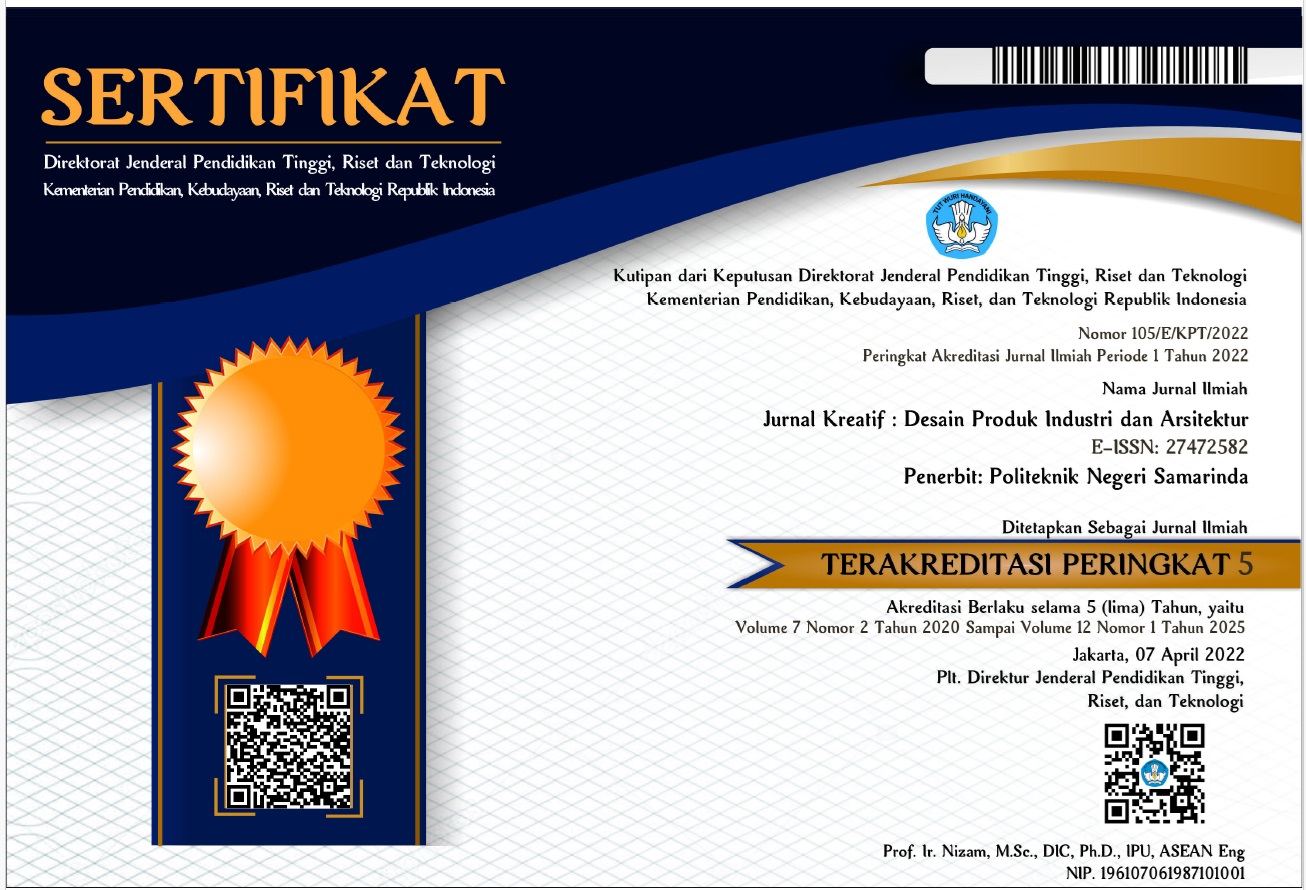DESAIN SET CATUR UNTUK ANAK-ANAK DENGAN MOTIF BATIK KALIMANTAN TIMUR
 Abstract views: 383
,
Abstract views: 383
,
 pdf downloads: 354
pdf downloads: 354
Abstract
ABSTRACT
The design and development of chess set products into a part of the development of design in the business world, especially children's games. But the current chess sets are less varied. Generally chess set that there is only a royal and has a black and white color without any introduction of Indonesian culture, especially batik East Kalimantan. The current chess set also rarely has good storage so chess storage is not neatly arranged when the game is over. With this in mind, a designer tries to create a better item with new innovations. Like designing a chess set that is easily understood by children, designing a chess set that can introduce East Kalimantan batik culture especially Dayak Kenyah batik, and designing chess sets that have aesthetic value. In this report with the title "Set chess for children with batik motif east kalimantan" gives a new alternative in the development of furniture design especially chess sets. With the design methods that have been done include: data collection analysis, design alterrnatif, design development of selected alternatives, and final design. So produced chess set design for children who have a modern minimalist design style.
Keywords: Set, Chess, For, Children, Motif, Batik, East, Borneo
Downloads
References
Allen, Edward. (2002). Dasar-Dasar Konstruksi Bangunan. Jakarta, Penerbit Erlangga. https://books.google.co.id 30 November 2017.
Cahyadi, Dwi. (2014). Aplikasi Mannaquin Pro Untuk Desain Produk, Yogyakarta; LeutikaPrio. 29 November 2017.
Utara, PT.Prenhallindo. https://books.google.co.id 26 November 2017. Magethi, Bey. (2009). Pedoman bermain catur. Bandung : Pionir Jaya.
Murtono, Sri, Dkk, (2007). Seni Budaya Dan Keterampilan. Jakarta Timur, Yudhistira. https://books.google.co.id 19 Desember 2017.
Sulastianto, Harry, Dkk, (2007). Seni Budaya Untuk SMA Kelas X. Bandung, Grafindo
Authors who publish with this journal agree to the following terms:
- Copyright on any article is retained by the author(s).
- The author grants the journal, right of first publication with the work simultaneously licensed under a Creative Commons Attribution License that allows others to share the work with an acknowledgment of the work’s authorship and initial publication in this journal.
- Authors are able to enter into separate, additional contractual arrangements for the non-exclusive distribution of the journal’s published version of the work (e.g., post it to an institutional repository or publish it in a book), with an acknowledgment of its initial publication in this journal.
- Authors are permitted and encouraged to post their work online (e.g., in institutional repositories or on their website) prior to and during the submission process, as it can lead to productive exchanges, as well as earlier and greater citation of published work.
- The article and any associated published material is distributed under the Creative Commons Attribution-ShareAlike 4.0 International License













